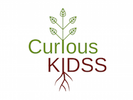|
Teachers can use these activities however best fit their students and classroom. Many activities can be completed by individual students, small groups, the whole class, or as part of learning centers. In order to address all of the standards listed on the activity overview, all of these supplemental activities need to be completed. Some of the content statements and elaborations are only addressed through the supplements and are not included in the versions written in the Growing Up WILD (GUW) guide. Note: All supplemental materials are protected by copyright and are owned by Ohio Environmental Education Fund and Ohio Environmental Protection Agency. They may be used, with attribution, for educational purposes but are not to be used commercially. Please include Curious KIDSS and www.curiouskidss.org when citing the supplemental materials. All references to Growing Up WILD must include a reference to the Association of Fish and Wildlife Agencies, which holds the copyright to Growing Up WILD. Guides can be obtained through a workshop from the ODNR Division of Wildlife. When implemented as written, supplemental resources for the Growing Up WILD activity Oh Deer address the following content statements in the 2017-2018 Ohio Learning Standards for the following disciplines: Science
Social Studies
Math
Mathematical Practices 1. Make sense of problems and persevere in solving them. 3. Construct viable arguments and critique the reasoning of others. 4. Model with mathematics. 6. Attend to precision. Reinforcement of Standards:
English Language Arts
0 Comments
Leave a Reply. |
||||||||||||

